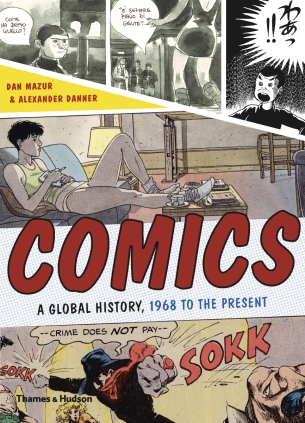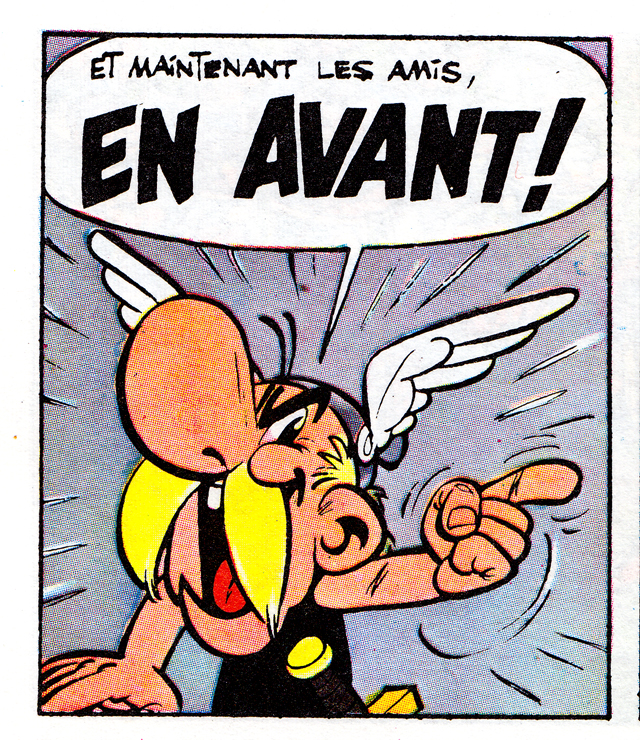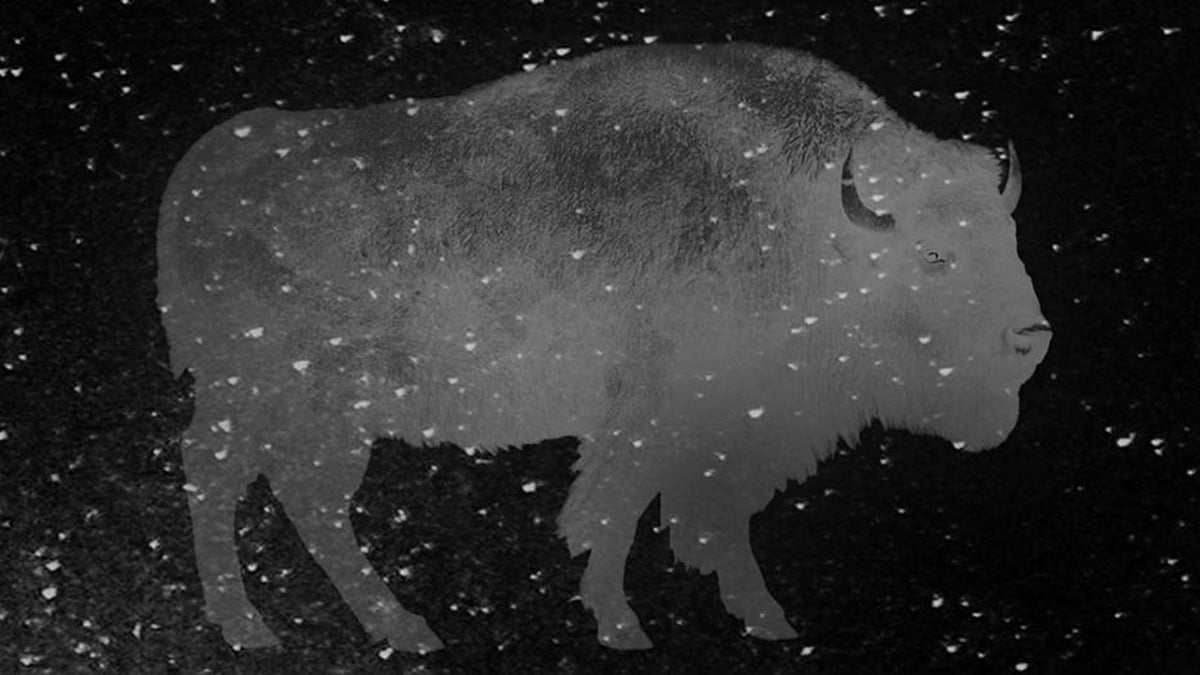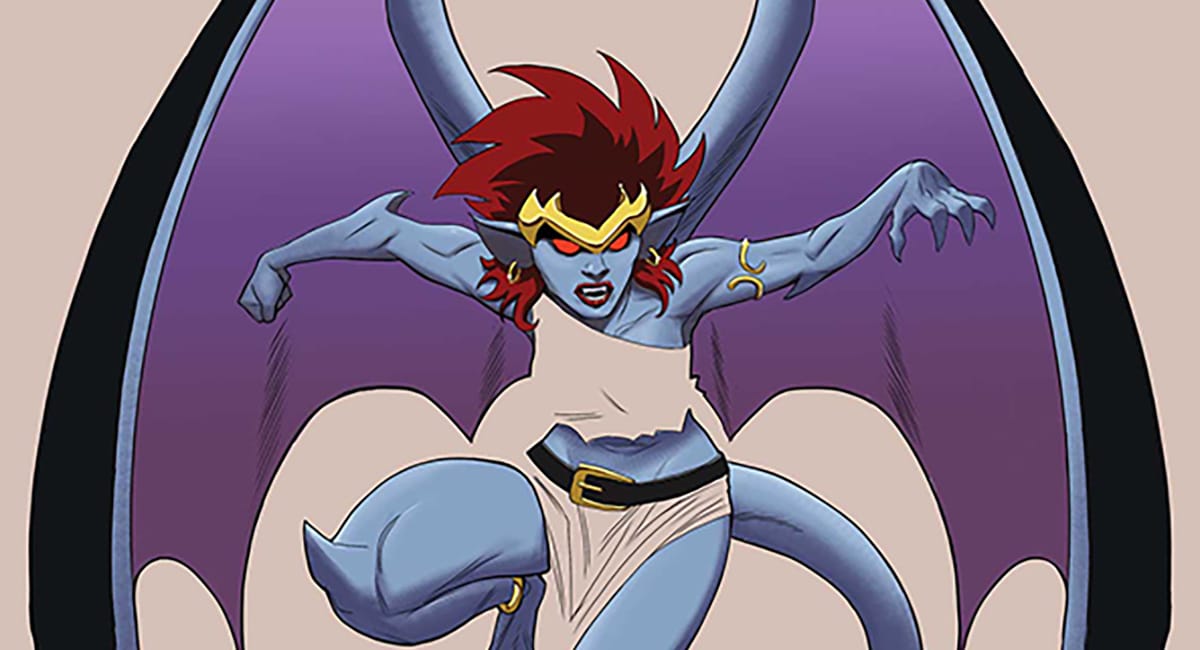 by Alexa Dickman
by Alexa Dickman
Funny story: A few weeks ago, I got a message on Facebook from an old friend from college. He asked me if I was still blogging, because the publishing company he now works for had a comics history book coming out that took a global view of comics history from 1968 onwards, and would I like a review copy? “Hold up,” I said. “Is this Mazur and Danner’s book?” Oh, had I already heard about it? “I heard about it when they were writing it, Mazur and I talked extensively about French feminist comics of the 1970s. I’ve known these guys for years from the Boston Comics Roundtable.”
So there’s my full disclosure, and also some kind of commentary about my life choices.
That said, I would have wanted to review this book even if it didn’t also qualify as a favor for three friends. Most comics histories cover a very discrete group of comics– American, mainstream (superheroes, EC, a smattering of other genres during the Golden Age), with a cursory look at undergrounds and the early alternatives. I’ve longed for a comics equivalent of David A. Cook’s A History of Narrative Film, that covers the zoëtrope and magic lantern all the way up through Lord of the Rings, spanning the globe and hitting all the major and some minor film movements– even if they never had any bearing on Hollywood blockbusters.
Mazur and Danner have written Volume III of my dream book. The subtitle betrays the main limitation, covering only after 1968, but that is still a substantial time span. What is covered is ample and quite relevant to my interests. It opens with the standard overview of American superhero comics of the late 1960s before plunging into the underground scene. From there, it primarily rotates between the major geographical nexuses of comics– Japan, France, and the United States, though both the artistic and geographical scopes expanded with every subsequent decade.
For the first time, I was able to put creators I’ve heard of and maybe was familiar with some of their work (e.g. Moëbius, Pratt, Tezuka, Otomo, etc.) into a broader context– not just in terms of which Americans had influenced them, but surprising connections like how post-WWII Italian creators were influenced by Argentinian creators, due to the vast number of Italian refugees who spent the war there. I also appreciated for the first time how the British Invasion of the 1980s had its roots in the synthesis of both American and Continental approaches to comics.
A certain pattern began to emerge that I found amusing: Young [American/French/Japanese] creators rebelled against [superheroes/ligne claire/Tezuka] for a few years via [aggressively obscene, politically subversive, etc.] works, until [superheroes/ligne claire/Tezuka] made a comeback after creators metabolized the merits of the ‘rebellious’ approach; interest in other genres also grew and small boutique publishers sprang up until they went out of business or were acquired by larger companies. Lather, rinse, repeat.
While the book does not presuppose any particular knowledge of American comics history, by necessity the authors had to make decisive executive action to pare it down to its essentials. I felt their ultimate selections of influential creators and books were plenty comprehensive, but others may fuss over their pet omissions. If I have one criticism of their coverage of American comics, it’s their focus on the market. While finances destroyed many a BD and manga publisher, but American comics are more explicitly presented in the Venn diagram of “innovative/influential” and “financially successful”. While understandable that American creators would show concern for their local market, it puts a damper on those chapters that their European and Asian counterparts don’t show.
There’s a good balance of information and images, allowing the art being discussed to speak for itself without coming off as padding the page count. It also avoids the pitfall of becoming a mere catalog of names and titles, thought some are given only cursory context or analysis. It was also pretty obvious that the chapters were written separately and collected without much thought given to transitional flow. Even two back-to-back chapters about the same country could end abruptly and open seemingly at random. Also, there are indices by creator and by title, but not by subject/keyword. But these are pedantic niggles.
One assumes a major reason histories like this are not common is because of language barriers and a dearth of translations. While Mazur is reasonably literate in French and recruited some Japanese-speaking friends for help (as well as taking advantage of manga that has been translated in to French), the authors still had to rely heavily on translated editions and bootleg scanlations. This book likely could not have been written 10-15 years ago, before the US manga boom and the efforts of the likes of the late Kim Thompson of Fantagraphics and NBM to bring more European comics to the Anglophonic audience brought the amount of comics of foreign origin to an academically significant saturation point. I hope that many future histories will follow in this one’s footsteps as access (legal or otherwise) to foreign material continues to grow.
Comics: A Global History is an ambitious and largely successful overview of the evolution of comics from a much-needed fresh perspective. I look forward to the discussions it will spark, the imports and translations it may encourage, but especially the future comics histories that follow in its comprehensive footsteps.
Alexa Dickman is a blogger who runs Ladies Making Comics and maintains her own ambitious comics history project over at the Women in Comics Wiki.









This book likely could not have been written 10-15 years ago
The book Tim Pilcher and I wrote, ‘The Essential Guide to World Comics’, came out nine years ago. It’s an overview/history of comics from more places than just the US, Japan, and France/Belgium (we also covered South and Latin America, Australasia, the UK, Asia, Africa, and the UK). I have Mazur and Danner’s book, but haven’t read it yet, so I can’t comment on whether the two books are simpatico or not, but I just thought you’d like to know :)
I’m very excited to dig right into this – just arrived at my store today, and it covers many gaps in my “comics history”library. Thanks for the review – it has me excited to dig into the contents…
@Brad, I will have to check out your book too! Though I was pretty close about the time span in which books like these have been possible ;)
Looking forward to checking it out. I would love to know if he has any info about how American super hero comics stories and characters are basically based on three things; the CCA (christian/conservative-extremist culture tactics), recent speculators and the speculators bubble that ‘killed’ Superman/comics and bankrupted Marvel, and homoerotic power fantasy fulfillment.
I saw this on the shelf recently and my first impression of it wasn’t great.
Flicking through, the contents seemed to heavily favor mainstream American comics (lots of superhero stuff on display) with side trips to the European and Asian comic industries. Which is fine and all, but using the word ‘global’ in the title may have been suggesting a wider net than is really thrown here?
Coming from Australasia I was disappointed that none of our cartoonists appear to feature – and I mean creators you would have heard of, for example: Dylan Horrocks, Roger Langridge, Colin Wilson etc.
I’ll reserve my judgement until I’ve read it properly, but I was surprised that there wasn’t more examples of international material on display.
@Adrian, of 19 chapters, only 7 are about American comics at all, and only 3.5 of those are about mainstream American comics. 3.5 are about US underground/alternative, 5 about manga, 5 about European comics, and 2 that are a blend of all regions with little to no superhero content. I can also say that Dylan Horrocks is featured.
Like I said, I’ll have to read it first – but there’s a massive world of international comics out there, and going by your chapter breakdown a third of the book is spent on American comics? (a history which is very well documented at this stage, particularly post 60’s). Opening the book up I expected to see some examples of unfamiliar international comics from countries like India, Africa, Germany and beyond, much like I did when flicking through Brad Brooks & Tim Pilcher’s book. I’m sure there are a few examples in there, it was just surprising to me that there wasn’t more.
Adrian, you might want to READ A BOOK before in depth critiques. That’s kinda one of the rules. Crazy, I know. Although this is a thick tome, this is still is a BROAD LOOK at global comics, putting it in a modern context. I think it is a valuable addition to the reference shelf.
I did capsule reviews of a bunch of books about comics here
http://www.publishersweekly.com/pw/by-topic/industry-news/comics/article/62181-eight-great-books-about-comic-books.html
There are a LOT of new reference books about comics coming out; looking forward to seeing the merits of them all debated.
Let’s back up here: I was hardly giving an in-depth critique, just my honest first impression of the book which I DO plan to read.
And thanks for the link, looks like a lot of great reference books to add to the shelf!
Heidi, I think you’re being a little harsh on Adrian. He wasn’t reviewing the book, he was giving his initial impression. I haven’t read the book either (although I have it), but I was surprised to see that it was billed on the back cover as the first ‘global’ history of comics when in reality, it isn’t (Horn’s World Encyclopedia of Comics, for all it’s flaws, probably holds that title, and the Moliterni edited Histoire Mondiale de la Bande Dessinée wasn’t far behind). I look forward to reading it soon, but my first impression was similar to Adrian’s. That aside, I’m very happy to see this book out, it’s a decent step forward for a broader comics scholarship.
@Alexa, please let me know if you can’t find it. I can probably get a PDF over to you. I still have all the original files on disk :)
Comments are closed.